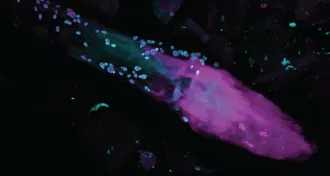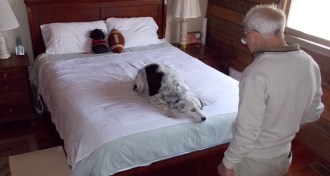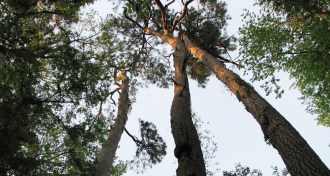Life
Sign up for our newsletter
We summarize the week's scientific breakthroughs every Thursday.
-
 Life
LifeA molecular window on itch
Researchers discover chemical puppet master behind the need to scratch.
-
 Life
LifeFoot fungi a thriving, diverse community
A skin census finds that toes and heels have the most fungal types.
By Meghan Rosen -
 Life
LifeExperimental vaccine protects against many flu viruses
Ferrets that receive shot can fight off variety of influenza strains.
-
 Plants
PlantsGiant genomes felled by DNA sequencing advances
Complete genetic blueprints have been collected for several conifer species.
-
 Psychology
PsychologyDog sniffs out grammar
After years of word training, a canine intuitively figures out how simple sentences work.
By Bruce Bower -
 Life
LifeViruses and mucus team up to ward off bacteria
Phages may play an unforeseen role in immune protection, researchers find.
-
 Life
LifeAnalog circuits boost power in living computers
New cell-based computers do division and logarithms more like a slide rule than a laptop.
By Meghan Rosen -
 Humans
HumansHighlights from the Biology of Genomes meeting
Highlights from the genome biology meeting held May 7-11 in Cold Spring Harbor, N.Y., include an enormous tree's enormous genome, genes for strong-swimming sperm, and back-to-Africa migration some 3,000 years ago.
-
 Life
LifeInvasive frogs may spread deadly amphibian fungus
African clawed frogs imported for 20th century pregnancy tests apparently communicate B. dendrobatidis to native species.
By Susan Milius -
 Animals
AnimalsEmbracing the swarm
Entomologist Michael Raupp is enjoying Swarmageddon. The giant batch of cicadas began emerging from the ground in late April and will be heard in some northeastern states through June.
By Sid Perkins -

-
 Animals
AnimalsMalaria parasite drives mosquitoes to human scent
Compared to uninfected insects, ones carrying disease land more often on sweat-soaked stockings.